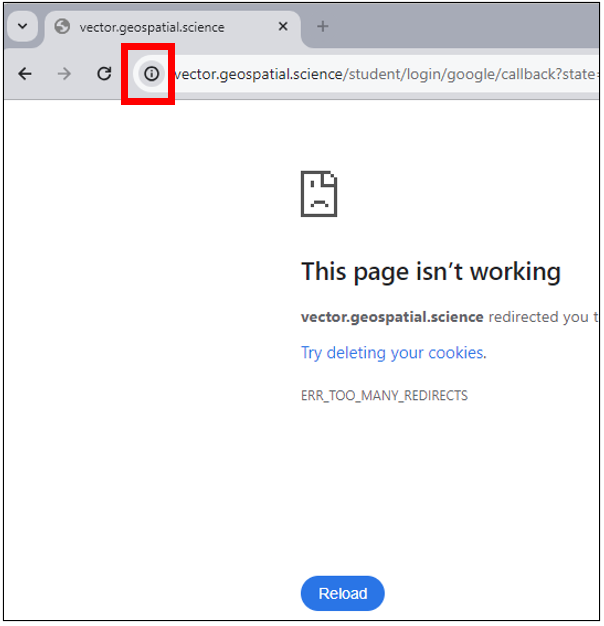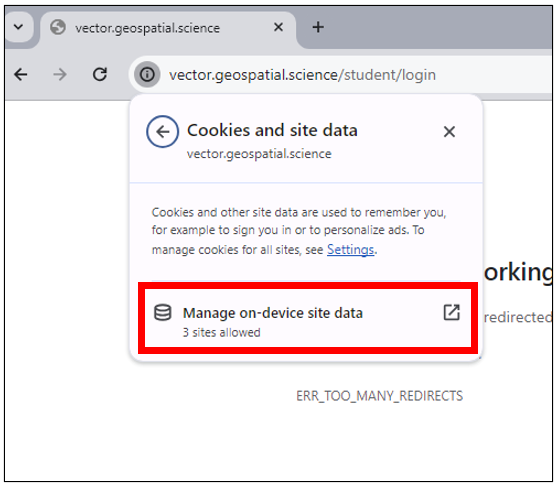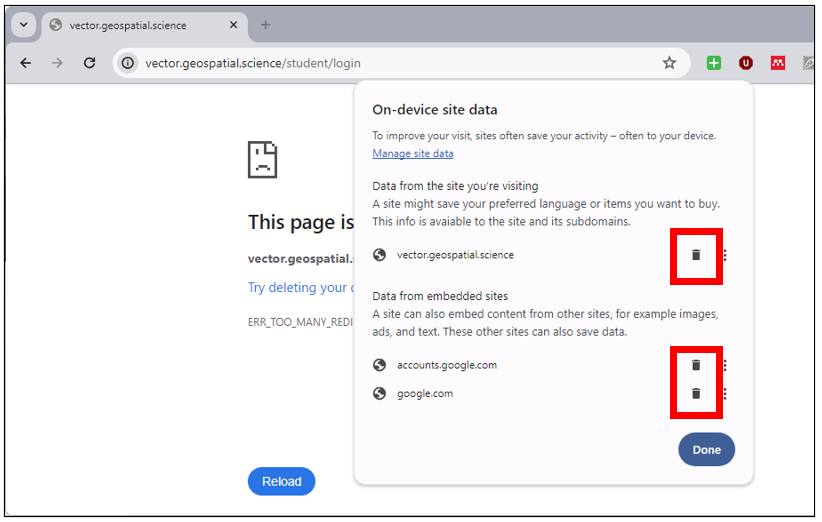Login Redirect Error Workaround
If Chrome is saying: "vector.geospatial.science redirected you too many times. Try deleting your cookies. ERR_TOO_MANY_REDIRECTS." after clicking the Login button, do the following to fix it.
| altitude | the height of an independent object, such as an aircraft, above ground level (AGL)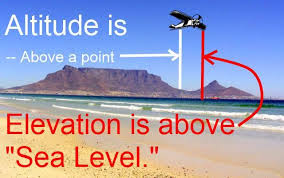 |
| angular unit of measure | the selected units for measuring angles. Choices include degree and radians. |
| aspect | The direction the developable surface faces in relation to the geographic coordinate system. Normal; transverse, oblique |
| benchmarks | Benchmarks are real-world locations which have been carefully surveyed with locations to match a specific geoid. |
| Cartesian coordinate system | An equally spaced grid that exists in a single geometric plane where intersections of perpendicular lines are labeled with the count of units from a specified origin (0,0) point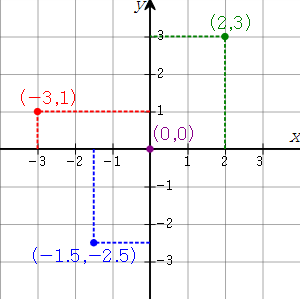 |
| compromise | projections attempt to balance all of the distortions in one map. This means that none of the six are "perfect", but each one is is balance with the others, the idea being that no one place is grossly distorted in comparison to any other place on the map |
| conformal | serve the purpose of preserving shape, distance, and bearing, at the expense of area and scale |
| control point | aka: tie point mathematically derived points that connect a two spatial objects together, such as a geoid and a reference ellipsoid |
| developable surface | a geometric shape which will not be distorted when flattened. Used as the base shape to transfer features during projections. Most often a cone, cylinder, or plane (azimuthal) |
| Distance Decay | A concept where the intensity of an effect (e.g., a crime's severity) decreases as the distance from the origin increases. |
| database | electronic storage container with a top-down structure in which the items contained are related to each other and that relationship allows for the data to be quickly and efficiently queried and retrieved for use. |
| distortion ellipses | start as circles placed on the globe. As the projection is created, the distortion ellipses distort in a manner equal to the map's distortion at the place upon which they are centered. This method allows for a user to visualize the map's distortion without any measuring equipment. |
| degrees | measurement of plane angle, representing 1⁄360 of a full rotation (circle). In full, a degree of arc or arc degree. Usually denoted by ° |
| datum shift | when control points are adjusted via better mathematical calculations or real-world surveying. Benchmarks cannot move, but control points can change via datum shifts. ''Major'' Large effort; many points change; expensive and time-consuming. Noted with a two-digit year (ie NAD83) ''Minor'' Just a few points change. Less expensive; less involved. Noted with a four-digit year (ie. NAD83(1985)) |
| Earth-centered, Earth-fixed System | Earth-centered, Earth-fixed systems use the center of the Earth as a start point for measurements, while local-north systems use a smaller area affixed to the Earth's surface as the start point |
| elevation | the vertical distance between local mean sea level and a single point on the Earth's surface |
| geoid | a model of the variation between global mean (average) sea level and local mean sea level, which is used to measure precise elevations on the topographic surface |
| Geographic Profiling | A process that uses the locations of a connected series of crimes to determine the most likely area of offender residence. |
| geographic grid | the result of using an established angular unit of measure to label the intersections of north-south and east-west lines on the surface of the Earth starting the labels at a principal meridian |
| geodetic datum | the result of attaching a "free-floating" reference ellipsoid to a specifically measured geoid via control points and benchmarks. |
| Global Navigation Satellite System | a general term for the technology of using satellites and a signal receiver to pin-point a location anywhere on the surface of the Earth |
| global mean sea level | the average of the sea level as affected by the pull of gravity when there is a finite amount of water upon a model of the Earth. |
| Geographic Information Sciences (GIScience) | the branch of geospatial sciences concerned with the underlying structure of how to collect and analyze data |
| geoid separation | |
| Geographic Information Systems | the software used to create, store, and manage spatial data, analyze spatial problems, and display the data in cartographic layouts |
| geodesist | a scientist who studies the size, shape, and changing surface of the Earth |
| geodetic | an action relating to geodesy |
| geodesy | the science of measuring and monitoring the size and shape of the Earth and the location of points on its surface |
| horizontal datums | used to reference location on the Earth's surface, regardless of elevation |
| Hot Spot Analysis | Identification of areas with a high concentration of features. |
| Lambert Conformal Conic Projection | projection developed by Johann Heinrich Lambert in 1772 utilizing a conic developable surface designed to preserve shape and size (to conform) of land masses. |
| large scale map | a map where the representative fraction is close to one and the objects in the map are relatively large (zoomed in) |
| latitude | also known as 'parallels' the east-west portion of a geographic grid measured with angles between 0 and 90° |
| local mean sea level | the measurement above or below the global average at a single point on the Earth's surface used for recording the elevation of topographic surface's relief |
| landforms | the descriptive words for individual features on the topographic surface, such as "hills", "valley", and "ridgelines" |
| Multiple Ring Buffers | A series of concentric rings used in spatial analysis to represent distances from a point. |
| modern geodesy | precise global and regional locations, both horizontal and vertical (along the Earth and above the Earth), mapping the land sea, and ice, and determining the variations in the Earth’s gravitational pull and how this effects measurements |
| minutes | "arc minute" 1/60th of a degree. Usually denoted by " |
| map scale | a mathematical representation expressing distance on a map vs distance on the ground |
| map distortion | In GIS, the unavoidable inaccuracies which occur when transferring features from a geographic coordinate system to a developable surface. Comes in six flavors:
|
| Mercator Projection | a projection developed by Gerardus Mercator in 1569 utilizing a cylindrical developable surface and a normal aspect tangent at the Equator and designed to produce a map with parallel lines of longitude and latitude. The main purpose of this projection is navigation in the mid-latitudes for east-west travel. |
| normal aspect | when a developable surface is tangent or secant with a line of latitude (parallel) Polar: when an azimuthal developable surface is tangent with either of the poles Equatorial: Specifically tangent with the Equator |
| Non-Spatial Data | Attributes related to a location but not describing its physical placement in space, such as information about a tree's age, type, and health. |
| oblate spheroid | a sphere-like object which is wider than it is tall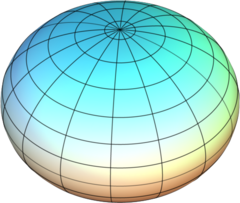 |
| oblique aspect | all other orientations after normal and transverse. Not tangent/secant with either a line of latitude or a line of longitude |
| orthometric height | the measured distance between the geoid and the topographic surface.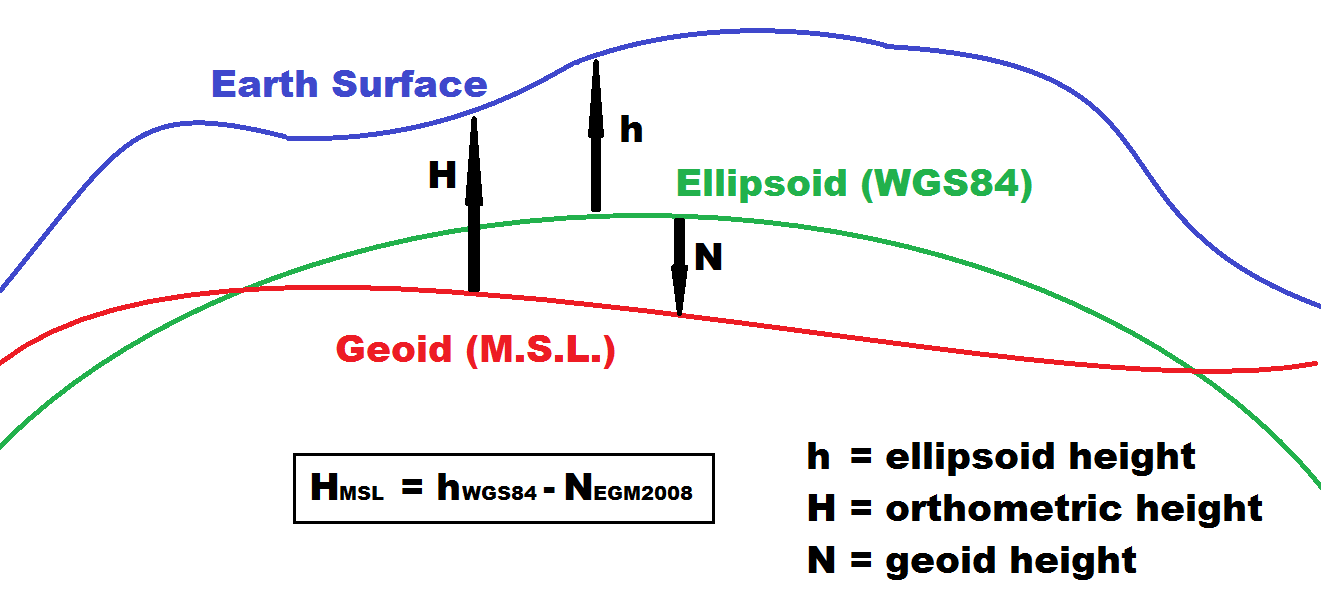 |
| orthometric datums | shows the changes in the Earth's gravitational pull from 0 - any height referenced to the Earth's gravity field can be called as "geopotential heights" |
| prolate spheroid | a sphere-like object which is taller than it is wide |
| principal meridian | the north-south line from which the labeling begins. East-west lines have a very obvious start point: the equator. North-south lines must start somewhere, so when it is established for a particular geographic grid, it can be considered the principal meridian. |
| Prime Meridian | the name of the principal meridian in the latitude/longitude system |
| projection | technically: the result of using one of variety of methods to transfer the geographic locations of features from a geographic coordinate system to a developable surface everyday use: any coordinate system, geographic or projected |
| planar coordinate system | the result of converting an angular unit of measure used to locate objects on a geographic coordinate system to a linear unit of measure via a Cartesian Coordinate System. Planar Coordinate Systems utilize linear units such as feet, meters, and international feet. |
| Predictive Analysis | A process of analyzing current and historical facts to make predictions about future or otherwise unknown events. |
| reference ellipsoid | an ellipsoid that is drawn to best-fit an area. World reference ellipsoids are drawn to best-fit the entire geoid; local ellipsoids are best fit on one side to a single place of the geoid |
| relief | the difference between the highest and lowest point within a particular area while landforms are the descriptive words for individual features |
| representative fraction | expression of map scale in ratio form utilizing non-specific linear unit, such as 1 map unit equals 250,000 real world units, or 1:250,000 |
| spatial resolution | the real-world measurement of one side of one pixel in a raster, ie. 30 meters. High spatial resolution would equate to small pixels while low spatial resolution would equate to large pixels |
| Seven Part Model of GIS |
|
| Spatial Data | Data that deals with location, such as lists of addresses, the footprint of a building, the boundaries of cities and counties, etc. |
| Spatial Thinking | The ability to draw upon past experiences and apply them to a new problem utilizing space, the distribution of objects in the real world, and a means of representing those objects. |
| Spatial Statistics | Probability and distribution of spatial data to determine patterns. |
| statement of equivalency | (also known as ''verbal scale''): the relative scale is expressly defined on a map: 1 cm = 1 kilometer; 1 inch = 10 miles |
| State Plane Coordinate System (SPCS) | a planar coordinate system for the United States which breaks states into zones and uses either a Lambert Conformal Conic projection (east-west trending states) or a Transverse Mercator projection (north-south trending states) to create small pieces with little distortion. The zones are stitched together to create a US wide map. |
| spheroid | a sphere-like 3D object where the radius in one direction is longer than the radius in a direction at a right angle to the first |
| small scale map | a map where the representative fraction is far from one and the objects in the map are relatively small (zoomed out) |
| seconds | arc minute. 1/60th of an arc minute; 1/3600 of a degree. Usually denoted by ' |
| true direction maps | equidistant maps specifically for azimuthal projections |
| trilateration | the process of determining absolute or relative locations of points by measurement of distances, using the geometry of circles, spheres or triangles. ... In contrast to triangulation, it does not involve the measurement of angles |
| Transverse Mercator Projection | a variation of the Normal Mercator Projection where the tangential line is switched from a parallel to a meridian. Lines of longitude and latitude appear circular and the map is optimized for north-south travel. |
| transverse aspect | when a developable surface is tangent or secant with a meridian |
| topographic surface | a detailed map of the surface features of land. It includes the mountains, hills, creeks, and other bumps and lumps on a particular hunk of earth. The word is a Greek-rooted combo of topos meaning "place" and graphein "to write." |
| tie points | see Control Points |
| tidal datums | show the changes in sea level due to tides and are based on local mean sea level |
| three dimensional datums | combine horizontal datums with ellipsoidal height |
| Universal Transverse Mercator (UTM) | a Planar Coordinate System (via a projection) which divides the globe into 60 separate 6° wide zones, each one with the principle meridian 3° from either side and cut half at the Equator. Each strip, or zone, is then stitched together to create an entire Earth flat map. To prevent negative numbers, each zone is assigned a origin arbitrarily labeled 500,000 mE, 10,000,000 mN. Using a Cartesian Coordinate System, locations are measured in meters. Since both the north and the south half of each zone will contain the same coordinates, and there are 60 zones, all possible coordinate pairs will appear 120 times, forcing the need to use the zone number and designate North or South is needed. |
| vertical datums |
|

